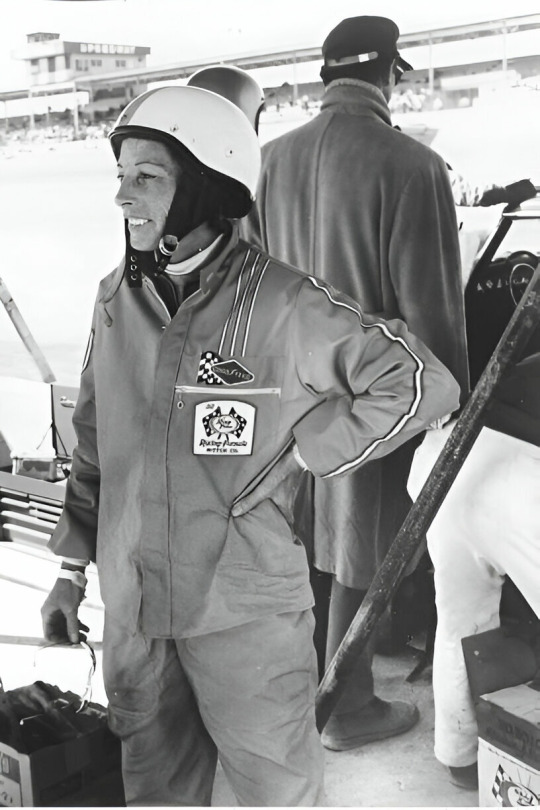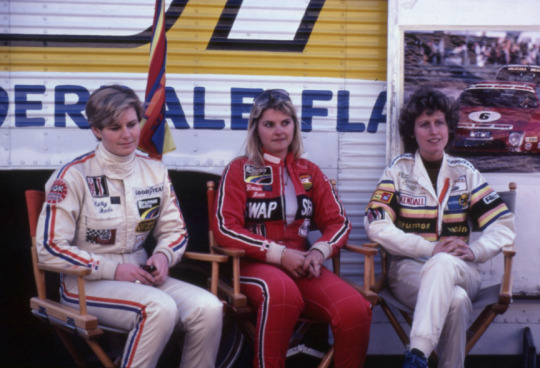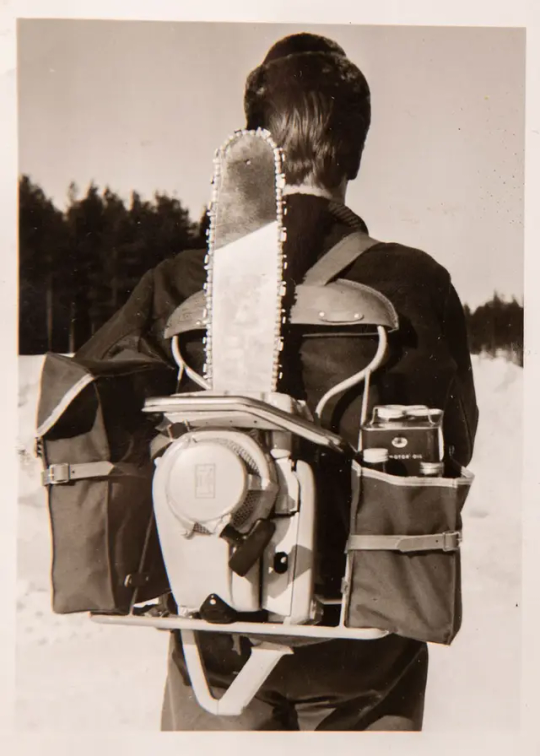#KM Allan
Explore tagged Tumblr posts
Text

narrowly missed being torn in two by ranpo vs. poe babygirl competition
#i would rather kms than vote either over the other like#those are my 26 & 28 year old babygirls MOVE#bsd#ranpo edogawa#edgar allan poe#bsd ranpo#bsd poe#ranpoe
28 notes
·
View notes
Text
Themis…
2 notes
·
View notes
Text
will kms if i am not accepted by an ivy league tbh
#ivy league#hell is a teenage girl#studying#edgar+allan+poe#chaotic academia#lizzy grant#im going to kms#college#im so tired#and scared
1 note
·
View note
Text
i just found this depressing ass poem i wrote a while ago so i hope you like it!
there’s a glass barrier between us.
i always see through it but most of the time it’s foggy for you.
i try tapping the glass to get your attention,
but all you do is look away
i know you hear me.
but you choose not to listen.
once in a while when the glass is too foggy to know if i’m there or not,
you complain about the barrier.
but you never try to break the glass.
i know it would shatter at the slightest touch,
but i think you like the barrier.
it lets me reach my hand over and wipe the water off your glass,
without you having to care about
the glass chipping away on my side.
carefully slicing into my skin.
deeper and deeper it goes,
while i pray for the blood to run under the glass
and stain your side.
maybe you’ll try and break the glass now,
but it’s too late.
you’ll hit the glass and it won’t move an inch,
stationary.
like how i’ve been for you all this time.
0 notes
Text

Pictured: Suzy Dietrich, part of one of two all-female teams during the 1966 edition of the race
Always There, Women in Motorsport: Women at the 24 Hours of Daytona
Women's history in motorsport is rich, and that has always been the case. This year we will have seven women competing in the race, but back in 1966, when it was run as a 24 Hour race for the first time, we already had five women competing in the race.
The 24 Hours of Daytona was first run in 1966 but its history goes back to 1962 when it was first run as a 3 Hours race counting towards the FIA’s International Championship for GT Manufacturers (Later known as the World Sportscar Championship). 1963 would also see a 3H race. In 1964 and 65 a 2000 Km race would be held, which was about half the length of the 24H of Le Mans at that time. In 1966 the race turned into a 24 Hour race and has ran as such since with two exceptions*
*In 1972 the race was shortened to a 6 Hour race as the FIA feared the reliability of the 3.0 liter cars and in 1974 the race was not run due to the energy crisis.
In 1966 the 24 Hours of Le Mans had already run over 30 editions and with success for women at that. In 1930 Marguerite Mareuse and Odette Siko would become the first women to compete in the race, finishing 2nd in class and in 1932 Siko would even go on to win her class. The 1930s would prove to be successful for women as in 1935 a record of 10 women would compete at Le Mans. In 1957 women were prohibited from competing at Le Mans and this ban would only be lifted in 1971.
During the period of this ban, the first 24 Hours of Daytona would be run which saw two all female teams compete. Rosemary Smith and Sierra ‘Smokey’ Drolet finished 30th overall and sixth in their class in a Sunbeam Alpine. While Janet Guthrie, Donna Mae Mims and Suzy Dietrich finished 32nd overall and won their class in a Sunbeam Alpine.
Clipping from The Boston Globe · Sunday, February 13, 1966 Mentioning these performances

Sunbeam Alpine Driven by Donna Mae Mims, Janet Guthrie, and Suzy Dietrich at the Daytona 24 Hour Continental Race, February 1966 (Source: thehenryford.org)

Donna Mae Mims, also known as the "Pink Lady" was the first woman to win a Sports Car Club of America national championship. Also one of the first women to compete in the 24H of Daytona (Source: Sports Car Club of America Archive)
Women would continue to compete at the race with another all-female team competing in 1967 consisting of Janet Guthrie, Sierra ‘Smokey’ Drolet and Anita Taylor driving a Ford Mustang. They finished fifth in class and 20th overall. Smokey would go on to win her class in 1969 driving a Corvette with John Tremblay, Vince Gimondo and John Belperche finishing sixteenth overall. That same year she would finish the 12 Hours of Sebring second in class together with Rosemary Smith. In 1970 Smokey would finish 25th overall while Donna Mae Mims competed but failed to finish

February 5, 1967: Sierra “Smokey” Drolet awaits her turn behind the wheel of the Ring Free-sponsored Ford Mustang she co-drove with Anita Taylor and Janet Guthrie during the 24 Hours of Daytona. (Photo by ISC Images & Archives via Getty Images)
In 1977 another female team took the start Christine Beckers and Lella Lombardi would share an Inaltéra GTP but unfortunately they did not make it to the finish. In 1980 Kathy Rude would drive in the 24 Hours of Daytona for the first time, finishing eight in the GTO Class together with her teammates. That same year Anne-Charlotte Verney would finish 9th overall and fifth in the GTX class while Lyn St. James finished 17th overall and Christine Beckers would finish 47th overall.
In 1981 Rude would finish seventh overall and third in the GTU class with her teammates Lee Mueller and Philippe Martin in a Mazda RX-7, Gaile Engle (36th overall) and Vicki Smith (56th overall) would also compete. The following year she would team up again with Lee Mueller, and she achieved a class win and sixth place overall with Allan Moffat as third driver. Vicki Smith also returned with a 25th place overall and Desiré Wilson would finish 45th overall.
In 1983 Rude would return to the race, now with an all-female team. Rude, Deborah Gregg, and Bonnie Henn would finish thirteenth overall and sixth in class in their Porsche 924. Smith and St. James also competed finishing 35th and 44th overall respectively. Kathy Rude would unfortunately suffer a huge crash at Brainerd that same year which left her in a coma for several weeks. She recovered but it meant she never got the chance to compete in IndyCar where she had arranged a seat for the 1984 season. The following years also saw women compete but without much success.

Kathy Rude, Bonnie Henn, Deborah Gregg Photo: Robert Fischer
In 1987 Lyn St. James finished 7th overall and first in the GTO Class, together with her teammates Tom Gloy, Bill Elliott, and Scott Pruett. Deborah Greg would finish 9th overall and 3rd in the GTO class while Linda Ludemann finished 16th overall.

Drivers Bill Elliott, Lyn St. James and Tom Gloy in victory lane following the SunBank 24 at Daytona International Speedway. (Photo by ISC Images & Archives via Getty Images)
Ludemann and James would continue to compete in the race in the coming years but it wasn’t until 1990 that there was success again. James would finish fifth overall and win the GTO class together with her teammates Robby Gordon and Calvin Fish in a Mercury Cougar. Ludemann would finish 17th overall.
Tomiko Yoshiwaka and Desiré Wilson would finish 47th overall in 1993. 1994 would see the return of an all-female team when Linda Pobst, Kat Teasdale, Margy Eatwell, Tami Rai Busby, and Leigh O’Brien finished 47th overall. That same year Lilian Bryner (15th overall), Kat Teasdale (17th overall) and Tammy Jo Kirk (34th overall) would also compete.

Tomiko Yoshikawa at Daytona in 1993
1995 saw another female class win when Lilian Bryer finished fifth overall with her teammates Enzo Calderari, Renato Mastropietro & Ulli Richter. They won the GTS-2 Class in their Porsche 911. The following year that same line-up would win their class again while they finished fourth overall. A little under 10 years later, in 2004, Lilian Bryner made history when she won the 24H of Spa overall.
In 1997 Claudia Hürtgen would finish 4th overall and first in the GTS-2 class with her teammates Ralf Kelleners, Patrice Goueslard, and André Ahrlé in their Porsche 911 GT2. This is the last female class win to date. Throughout the late 90s into the early 2000s women continued to compete in the race. The biggest success came for Milka Duno when she finished 2nd overall in 2007 with a Riley mK XI together with Dario Franchitti, Marino Franchitti, and Kevin McGarrity. This remains the highest overall finish of a female driver to date.
In 2019 an all-female entry returned when Simona de Silvestro, Katherine Legge, Bia Figueiredo, and Christina Nielsen finished 32nd overall and 12th in the GTD class in an Acura NSX GT3. The following year Tatiana Calderon, Rahel Frey, Legge and Nielsen competed in a Lamborghini Huracan but failed to finish.

Simona de Silvestro, Katherine Legge, Christina Nielsen, and Bia Figueiredo in 2019
From 2013 up until the race this year, at least a single woman has competed. With a record of entries coming in 2024 when nine women competed. This year 7 women will compete in the race with Karen Gaillard making her debut in the race.
#this was meant to be short#it passed 1k so not so short anymore#sorry for the half assed ending almost skipping over 2 decades but i feel like people know way more about recent stuff so post turn of#the century so i aimed at most of the things before that#rolex 24#imsa#24h of daytona#24h daytona#women in motorsport#*history series#i have an incredible headache so pls ignore any grammatical errors while reading
89 notes
·
View notes
Text

NASCAR Pantera ‐ First To 300
A reporter sat in a late-night cafe, sipping coffee and attempting to calm his nerves after a high-speed ride with Gary and his Pantera. The deafening roar of the V-8 engine still echoed in his mind, and his hands shook as he held his cup. It was as if he had just escaped from the clutches of the devil himself. Tragically, a few minutes later the devil caught up with Garry Mitsunaga and his red Pantera!
For students of Japanese car culture, the Mitsunaga Pantera that graced the cover of Option Magazine is a significant page of Asian tuning lore, as it was the first street-legal vehicle to achieve a recorded speed of 300 km/h in Japan.
Actual speed was 307.69 km/h on the infamous Yatabe Test Circuit in November 1981, making it the most legendary Pantera in all of Japan. Figuring Yatabe was too dangerous for civilian drivers, and wanting to take the human element of unpredictability out of things, driving duties at this event were performed by professional racer Kunimitsu Takahashi, who is considered the father of drifting.
Yatabe was the preeminent destination for high-speed testing in Japan from the 1960s to the 1990s. However, it was closed two decades ago due to a tragic accident involving Masa Saito, the editor of the tuning magazine Option. After the accident manufacturers started shifting towards more contemporary testing facilities.
Prior to the Porsche-vs-Skyline dreams of the 1990s, the streets of Japan were ruled by the infamous Midnight Club running Pantera's, Firebirds and American V-8s. For those unaware of the Pantera, it is an Italian-American sportscar with a Ford 351 Cleveland engine and were sold in the early 70's through Lincoln Mercury dealerships.
Leading up to November 1981, top speeds were achieved by vehicles such as the S30 Fairlady, tuned by SS Kubo, which reached a maximum speed of 257.60km/h. The fastest imported car, surprisingly, was the Trust Firebird Trans-Am, which recorded a top speed of 264.71km/h. So when the Pantera eclipsing the 300km/h mark it was a huge leap forward and a landmark achievement, becoming the benchmark for all the street racers and tuners to beat.
Mitsunaga was not entirely content. Only a speed above 320 km/h (200 mph) would suffice. It is said that Takahashi advised him against driving the Pantera outside of a racetrack. Mitsunaga disregarded the warning.
Just before the accident, he was transporting a journalist down a 38 kilometer (24 mile) stretch of the Tomei Expressway. With a recorded time of 6 minutes and 20 seconds he averaged 250 KM/H ( ~160 MPH).
Not long after dropping off that rattled journalist, he supposedly totaled his Pantera while avoiding a taxi. They meet their end at approximately 1:40 a.m. on November 28, 1981. Tragically, Mitsunaga died in the accident, instantly.
At the moment of his death, Garry Allan Mitsunaga was already a legend in the Japanese dragstrip and top-speed racing scene. He was an American, born in Hawaii and employed by the Harman Kardon audio group. The company sent him to Tokyo in 1975 to work for one of its Japanese divisions, in sales.
Upon his passing, he was revered as a patron saint of street racing, inspiring countless individuals to pursue ever-greater velocities. Despite his non-Japanese origin, he was a hero to the local community, and his legacy lived on through the Mitsunaga Pantera, a symbol of both the thrill and the peril of this high-octane pursuit. Although the whereabouts of the Pantera are unknown, its engine showed up for sale in 1995.
NASCAR
Mitsunaga's Pantera, was tuned by Masaru Hosoki from ABR, one of Japans most famous tuners. It also featuring a 600hp engine built by Mario Rossi, an American NASCAR mechanic and crew chief for the likes of Bobby Allison and Glenn “Fireball” Roberts. Rossi was also the guy that built the only Dodge Daytona to compete during the 1971 season. It's only race was finishing 7th at the Daytona 500 with a de-stroked Plymouth 340 TA engine to meet the new 305ci engine displacement mandate for the five Ford & Chrysler aero cars during the 1971 NASCAR season.
Rossi has been embroiled in controversy since his involvement in the $300 million drug smuggling scandal that shook NASCAR in 1982. Four days after the 1982 Daytona 500 in Florida, authorities arrested 66 people, including several associated with NASCAR teams, on what has been labeled “Black Thursday.” Among those implicated in the scheme that authorities believe grossed $300 million were owner Billie Harvey and driver Gary Balough from the team on which Rossi was working as a mechanic. Rossi’s role (if any) in the drug operation is unclear – though his own daughter implicates him.
Rossi's whereabouts have been a mystery since his disappearance, with some believing him to be in the witness protection program in the United States. Despite claims of his death in a plane crash off the Bahamas in 1983, the insurance company asserts that the plane in question has been sold multiple times without any recorded accidents.
What’s legend and what’s fact we are unlikely to ever know for certain. What we do know, however, is that Garry Mitsunaga and his Pantera dared to dance with the devil in the witching hour.
33 notes
·
View notes
Note
im going to kms cause the vanitas no carte equivilant of edgar allan poe (from bungou stray dogs he is literally the love of my life i have devoted hours upon hours of my life to researching edgar allan poe who is in a total of 6 episodes in a 5 season show anyways)
his french straight twin makes me want to die


literally twins.
(1st is poe 2nd is his french straight twin (his name is jean jock or smth idk how to spell it)
i. i see. nods nods (doesn't understand anything being said)
6 notes
·
View notes
Text
Ravens lost on Edgar Allan Poe’s birthday. Not to be dramatic but I’m gonna kms
3 notes
·
View notes
Text

─────────────꒰ა ♡ ໒꒱────────────
❝𝐭𝐡𝐢𝐬 𝐢𝐬 𝐣𝐮𝐬𝐭 𝐡𝐨𝐰 𝐢 𝐚𝐥𝐰𝐚𝐲𝐬 𝐚𝐦! 𝐩𝐞𝐫𝐟𝐞𝐜𝐭 𝐚𝐧𝐝 𝐚𝐧𝐠𝐞𝐥𝐢𝐜!❞
⋆˙ ⋆⭒˚.⋆ info + tags under cut
✧ hello, i'm kinablu but u can call me kina or k. im a 16 yo gay boy and i love to make things. specifically, i love to draw, write, and cosplay. i made this blog to share my creations and random ramblings. im new to tumblr so if i mess something up, please tell me ( ´_ゝ`) heres some more things about me, like my interests and dni. i love to make friends, so feel free to dm me at any time! ✧
tags
not too sure how this feature works since i'm new. but ive seen people use it like this so...lmk if this is the wrong way!
#kinatalk - random stuff. just talking about my life...
#kinarant - rants. good and bad, probably a lot of character theories
#kinaart - my art!
#kinacosplay - my cosplays!
#kinawriting - my writing! prob mostly fanfic lol
#kinaocs - things about my ocs!
#kinareblog - things i reblogged bc i think they are cool :3
interests
blue lock (main interest)
ensemble stars
project sekai
alien stage
milgram
needy streamer overload
vocaloid
bungou stray dogs
genshin impact
visual kei
sanrio
omori
stardew valley
minecraft
life makeover
the phantom of the opera
+sm more im forgetting...
dni
homophobes, racists, transphobes, etc..
proship
fujoshi/himejoshi/anything under that umbrella
makes sa jokes
tatsuhime and kaisagi shippers
byf
!!I AM A MINOR!! do NOT send me nsfw.
i often make nsfw jokes and fake flirt, as well as kys/kms jokes. i also say the f slur jokingly a lot since i can reclaim it.
do not use the incorrect pronouns on characters around me, even if it is a headcanon
i have diagnosed OCD and anxiety disorders. i may talk about them on here.
because of my anxiety i may be hard to interact with at first and i often take things the wrong way
˚₊‧꒰ა ☆ ໒꒱ ‧₊˚
✧congrats, u made it through the basics! here's some more silly facts about me like my kins and fav chars.✧
my favs <3
(blue lock) michael kaiser, ryusei shidou, alexis ness, nagi seishiro...
(ensemble stars) tatsumi kazehaya, kaname tojo, himeru, shu itsuki, fuyume hanamura...
(project sekai) mafuyu asahina, mizuki akiyama...
(vocaloid) hatsune miku, kaito, otomachi una, mayu...
(stardew valley) elliott...
(alien stage) luka, ivan...
(milgram) kusunoki muu, kashiki yuno...
kins
kaname tojo
mafuyu asahina
ena shinonome
shu itsuki
charles chevalier
hitori gotou
edgar allan poe(the bsd char, not the real guy)
nagi seishiro
mizuki akiyama
etc
white(american w/ german + czech roots)
ISFJ e9(still working on enneagram..)
5'3 ..
eng only, but learning french
────────────꒰ა ♡ ໒꒱────────────

#intro post#introductory post#introduction#blog rules#ensemble stars#vocaloid#project sekai#blue lock#needy streamer overload#hello tumblr#hi#wtf do i put here#how are you guys#kinatalk#first post
4 notes
·
View notes
Text
Highest alert level raised as Philippines braces for Typhoon Usagi
A fifth major storm in three weeks hit the northeastern Philippines on Thursday, prompting new large-scale evacuations and a UN appeal for funds to help the government address the plight of rural residents.
At least 1,400 people have been evacuated from coastal areas as well as flood and landslide-prone areas of Dinalungan and the nearby municipality of Baler, according to Donald Allan Tay, spokesman for the disaster management headquarters.
In total, the Philippine government ordered the evacuation of 2,500 villages on Sunday, although the national disaster management office did not have figures on the total number of evacuees. Mervina Pableo, civil defence chief of Dinalungan town near Dilasag, said:
“We have been hit by strong winds and heavy rains. Some trees are falling and electricity has been cut off since yesterday. We can’t go out and do damage assessment yet.”
The successive storms have drained the resources of both the government and local households, the UN said late Tuesday. Some 210,000 people most affected by the recent flooding need support for “critical life-saving and protection efforts over the next three months,” the UN Office for the Coordination of Humanitarian Affairs said in a statement. UN Philippines Resident and Humanitarian Coordinator Gustavo Gonzalez said:
“Typhoons are overlapping. As soon as communities attempt to recover from the shock, the next tropical storm is already hitting them again. In this context, the response capacity gets exhausted and budgets depleted.”
The typhoon is approaching
The Meteorological Service said the Typhoon Usagi, with maximum wind speeds of 130 km/h, was moving rapidly to the northwest and was forecast to head into the South China Sea on on Thursday evening, passing through the mountainous terrain of the main Philippine island of Luzon.
Schools and government offices have been closed in areas expected to be hardest hit by the latest typhoon.
The National Meteorological Agency warned of strong winds and heavy rain in the north of the country, as well as a “moderate to high risk of storm surge” – giant waves threatening the coast of the main island of Luzon.
Read more HERE

2 notes
·
View notes
Text
Agh I’m gonna need a graphics card to run ffxiv with the graphics update and I’m stressed about it already
1 note
·
View note
Text
















Raid on Entebbe - NBC - January 9, 1977
Historical Drama
Running Time: 150 minutes
Stars:
Peter Finch as Yitzhak Rabin
Charles Bronson as Brigadier General Dan Shomron
Yaphet Kotto as Idi Amin
Martin Balsam as Daniel Cooper
Horst Buchholz as Wilfried Böse
John Saxon as Major General Benny Peled
Jack Warden as Lieutenant General Mordechai Gur
Meshach Richards as Major General Allon
Sylvia Sidney as Dora Bloch
Robert Loggia as Yigal Allon
Tige Andrews as Shimon Peres
Eddie Constantine as Captain Michel Bacos
Warren Kemmerling as Gad Ja'akobi
David Opatoshu as Menachem Begin
Allan Arbus as Eli Melnick
Stephen Macht as Lieutenant Colonel Yonatan "Yoni" Netanyahu
James Woods as Captain Sammy Berg
Harvey Lembeck as Mr. Harvey
Dinah Manoff as Rachel Sager
Kim Richards as Alice
Aharon Ipalé as Major David Grut
Mariclare Costello as Gabrielle Krieger
Larry Gelman as Mr. Berg
After the Uganda–Tanzania War, Tanzanian troops discovered Bloch's body in 1979 in a sugar plantation around 20 miles (32 km) from Kampala, near the Jinja Road. Visual identification was impossible because her face was badly burned, but the corpse showed signs of a leg ulcer. A pathologist working with the Israel Defense Forces formally identified Bloch from the remains. Her remains were returned to her son in Israel, where she was given an Israeli state funeral. She was buried in Jerusalem's Har HaMenuchot Cemetery. (Wikipedia)
21 notes
·
View notes
Text
OUR HISTORY
SAVOTTA – MADE TO ENDURE SINCE 1955
“Pylkönmäen Nahkatyö” (Pylkönmäki Leatherworks), later to become Savotta, was founded by Allan and Marjatta Halme in 1955 in the town of Pylkönmäki, 30 km from our current headquarters and factory in Karstula.

In the very beginning Pylkönmäen Nahkatyö made equipment for loggers, gloves, bags and backpacks. The focus was on durability, and the motto was “let’s make them to last”. After World War II Finland had to pay significant sums of war reparations to the Soviet Union, and with one of our main natural resources being the vast forests a lot of this money came from logging sites, thus there was a great demand for suitable equipment.

The company quickly grew and began producing backpacks and bags for recreational use. In the 1960’s “Pylkönmäen Nahkatyö” was renamed “Savotta Retkeilyväline” (Savotta Hiking/outdoors equipment), taking it’s new name from the Finnish word savotta, which means a logging site or operation, and the company moved from Pylkönmäki to the current site in Karstula.

The selection expanded further to include tents and the demand for large external frame hiking backpacks started growing. During this time Savotta began working with the Finnish Defence Forces, designing and manufacturing tents and load carrying equipment.

In the 1970’s the company name was again changed into it’s current form, Finn-Savotta Oy, and the business continued growing and expanding. Allans and Marjattas children Anita and Riitta took over the business. They continued to run the business until ownership was again passed down to Anitas sons Elmo and Julius in 2016.

Throughout the decades Savotta has stayed on the same course as established in the very beginnings of the company. We’re still making tents, backpacks, bags and other load carrying equipment for recreational outdoors and military use, and we still make them to last.
To see what we are about today, check out our website https://www.savotta.fi
#backpack#hiking#made in finland#military#savotta#savottagear#madeinfinland#madetoendure#military gear
2 notes
·
View notes
Photo

Throwback Picture. Graffiti. GEEKS . Near Bushwick. ESCAPE. KMS. Photo taken May 2017. Can anyone ID the other Writers? Street Art completed 2016. by Allan Ludwig
4 notes
·
View notes
Text
its barbie day at my school and everyones wearing pink and km wearing my fucking allan shirt 😭😭
6 notes
·
View notes
Text

El Porsche 911 GT1 es un automóvil de carreras diseñado por el fabricante alemán Porsche para competir en la clase GT1 de deportivos, que también requería una versión de calle para fines de homologación. La versión de calle, producida en edición limitada, se llamó 911 GT1 Straßenversion (versión de calle). Aquí tienes toda la información existente sobre el Porsche 911 GT1:
- El 911 GT1 se presentó en 1996, como respuesta al McLaren F1 y al Ferrari F40, que dominaban la categoría GT1. Sin embargo, el 911 GT1 tenía muy poco en común con el 911 de la época, solo compartiendo los faros delanteros y traseros con el deportivo de producción. Su chasis frontal se basaba en el 911 (993), mientras que su subchasis trasero se derivaba del 962C, al igual que su motor bóxer de 6 cilindros biturbo de 3.2 litros, refrigerado por agua, que generaba unos 600 CV de potencia. El motor se montaba en posición central-trasera longitudinal, en lugar de la posición trasera habitual de los 911. El 911 GT1 debutó en las BPR Global GT Series (el predecesor del campeonato FIA) en las 4 horas de Brands Hatch, donde Hans-Joachim Stuck y Thierry Boutsen ganaron cómodamente. También ganaron en Spa y Ralf Kelleners y Emmanuel Collard triunfaron para el equipo oficial en Zhuhai. El 911 GT1 alcanzó una velocidad máxima de exactamente 330 km/h en la recta de Mulsanne durante los entrenamientos de las 24 Horas de Le Mans de 1996¹².
- En 1997, Porsche presentó una versión evolucionada del 911 GT1, llamada Evo, que tenía un aspecto más aerodinámico y una carrocería más ligera. El motor también se mejoró ligeramente, alcanzando unos 630 CV. El Evo dominó el campeonato FIA GT, ganando seis de las once carreras y logrando el título de constructores y pilotos con Stuck y Boutsen. Sin embargo, en las 24 Horas de Le Mans, el Evo sufrió varios problemas mecánicos y accidentes, y solo uno de los tres coches inscritos logró terminar la carrera, en el segundo puesto detrás del McLaren F1 GTR²³.
- En 1998, Porsche desarrolló una nueva versión del 911 GT1, llamada simplemente '98, que tenía un diseño completamente nuevo y más parecido al 911 (996) que se lanzaría ese mismo año. El motor se modificó para cumplir con las nuevas normas de la FIA, que limitaban la cilindrada a 3 litros y la potencia a unos 550 CV. El '98 también tenía un sistema antibloqueo de frenos (ABS) y un control de tracción (TC). El '98 se enfrentó a una dura competencia por parte del Mercedes-Benz CLK GTR y el Toyota GT-One, pero logró ganar las 24 Horas de Le Mans con Laurent Aïello, Allan McNish y Stéphane Ortelli al volante. Fue la última victoria de Porsche en Le Mans hasta el año 2015²⁴.
- Para poder homologar el 911 GT1 como un GT1, Porsche tuvo que producir un mínimo de 25 unidades para uso en carretera. Estas unidades se denominaron 911 GT1 Straßenversion y se vendieron a un precio de unos 900.000 dólares cada una. El Straßenversion tenía un aspecto similar al Evo de 1997, pero con algunos cambios para adaptarse a las normas legales, como faros elevados, parachoques más grandes, retrovisores exteriores más grandes, intermitentes naranjas y un alerón trasero fijo. El motor se redujo a unos 537 CV para mejorar la fiabilidad y el consumo. El Straßenversion podía acelerar de 0 a 100 km/h en unos 3.7 segundos y alcanzar una velocidad máxima de unos 310 km/h² .
6 notes
·
View notes